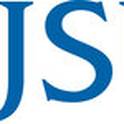
Local and state governments provide 75 percent of transit funds in the United States. With all levels of governments under significant fiscal stress, any new transit funding mechanism is welcome. Value capture (VC) is one such mechanism. Based on the “benefits received” principle, VC involves the identification and capture of public infrastructure-led increase in land value. While the literature has extensively demonstrated the property-value impacts of transit investments and has empirically simulated the potential magnitude of VC revenues for financing transit facilities, very little research has examined the suitability of VC mechanisms for specific transit projects. This report aims to fill this research gap by examining five VC mechanisms in depth: tax-increment financing (TIF), special assessment districts (SADs), transit impact fees, joint developments, and air rights. The report is intended to assist practitioners in gauging the legal, financial, and administrative suitability of VC mechanisms for meeting project-specific funding requirements.
- Land value capture,
- Joint development,
- Impact fees,
- Tax increment financing,
- and Special assessments districts
Available at: http://works.bepress.com/shishirmathur/64/
